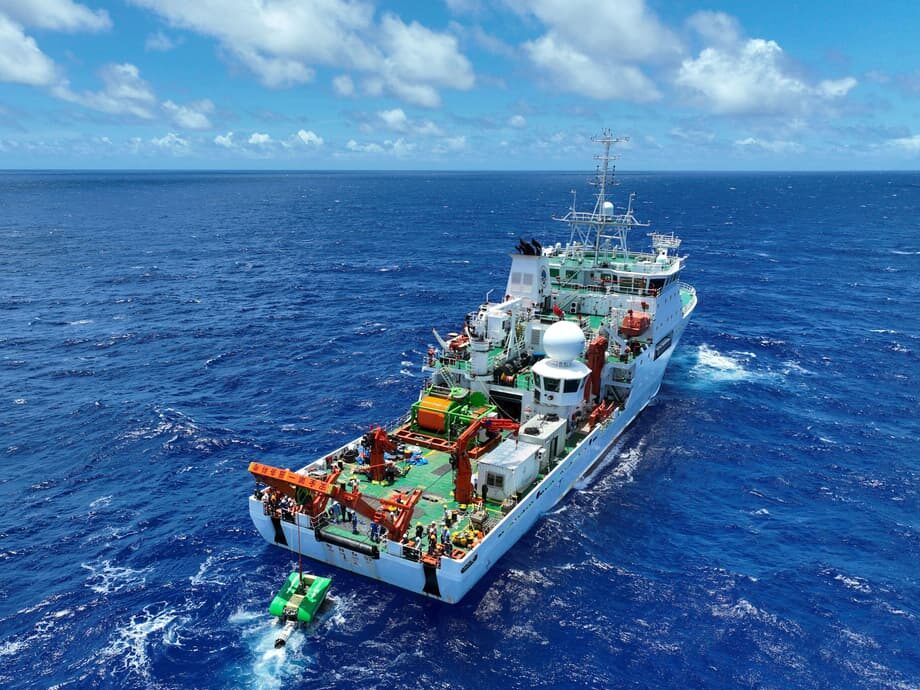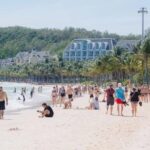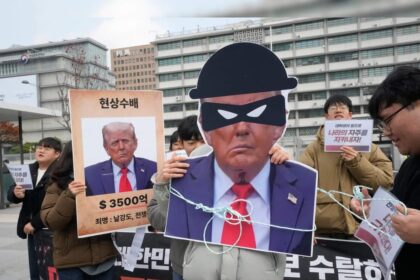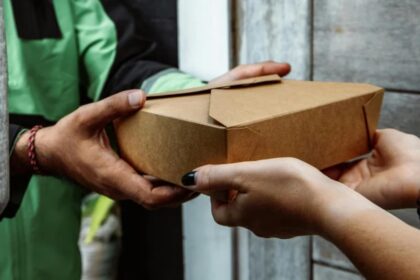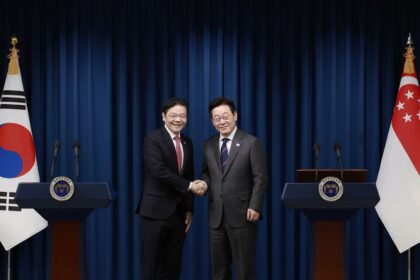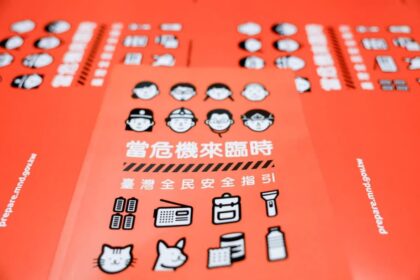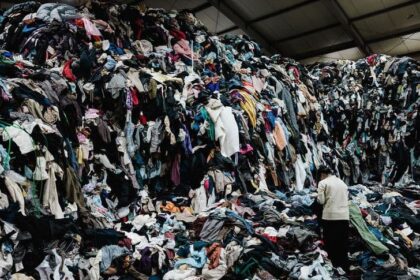A new Pacific front over critical minerals
Far from shore, thousands of meters below the Pacific, lie potato sized rocks called polymetallic nodules. They contain cobalt, nickel, manganese, copper and traces of rare earth elements. Those metals sit at the heart of the clean energy transition, electric vehicles, grid storage, advanced electronics and defense systems. As demand rises and land deposits come under strain, attention has shifted to the ocean floor. In the Cook Islands, exploration ships, research vessels and government agencies are now focused on what may be one of the richest seabed troves on the planet.
- A new Pacific front over critical minerals
- Why the Cook Islands matter
- What Washington is doing
- Beijing’s moves and regional reach
- Who sets the rules at sea
- Science, nature and the unknowns
- Voices and choices in the Cook Islands
- Industry and the economics at stake
- Key timelines and decisions ahead
- The Bottom Line
The United States and China have placed the Cook Islands at the center of a larger contest over resources, standards and influence. Washington is funding studies and charting seabed terrain. Beijing has set up formal cooperation and positioned its companies to lead in international waters. Both frame their engagement in terms of science and responsible development. Both see strategic value in reliable supplies of critical minerals. The stakes include not only supply chains for clean technology, but also how and by whom the deep ocean will be managed.
Commercial extraction has not begun anywhere. Deep sea mining remains controversial. Dozens of countries have called for a pause while science catches up. Pacific communities are split between economic opportunity and environmental risk. The Cook Islands currently prohibits seabed mining. Its authorities are collecting data, running assessments and debating whether any activity could ever meet a strict standard of safety.
Why the Cook Islands matter
The Cook Islands sits roughly halfway between Hawaii and New Zealand. Its exclusive economic zone covers close to 2 million square kilometers, a maritime area many times larger than its land. Officials estimate that its waters hold enormous quantities of nodules. Internal studies, along with outside analyses, point to billions of metric tons scattered across the abyssal plain, potentially among the largest concentrations in the Pacific.
The government has issued exploration licenses to three operators, two with US links and one owned in the Cook Islands, to survey the seabed and study feasibility. The Seabed Minerals Authority oversees policy, environmental baselines and compliance. For now, mining is banned. Leaders say any step beyond exploration requires rigorous science, transparent rules, and safeguards for the marine environment and the country’s livelihoods.
What Washington is doing
In April, President Donald Trump signed an executive order directing US agencies to accelerate work on seabed minerals. The order opened a path for permits under a 1980 law that predates current global rules. It instructed officials to support exploration both within US waters and beyond national jurisdiction. That move departed from decades of informal US alignment with the United Nations Convention on the Law of the Sea, a treaty the US has not ratified.
Alongside that policy shift, Washington has launched a partnership with the Cook Islands focused on research, mapping and technical assistance. A US research vessel is surveying parts of the Cook Islands seabed. The initiative includes funding for local capacity and data collection so the country can evaluate its options. In an official joint statement, the two governments said the effort aims to advance science, strengthen stewardship and support responsible development. The text underscored shared interests in economic self reliance and environmental protection. The statement is available on the US State Department website here.
The joint statement stressed high standards and transparency. It also highlighted the role of US linked firms active in Cook Islands research. Shortly after the executive order, a US affiliate of The Metals Company applied for a mining license in international waters under domestic law. That application challenged the current international system and set up potential legal and diplomatic disputes around jurisdiction.
“Together, we commit to advancing responsible development of seabed minerals and global scientific understanding of the deep ocean, and to setting a high standard for transparent seabed resource management.”
The line above appears in the US Cook Islands statement, which frames cooperation around science first. Whether that approach can coexist with moves to license mining outside the global framework is now a central question for Pacific partners.
Beijing’s moves and regional reach
China has a long standing presence in international seabed exploration managed by the International Seabed Authority (ISA). Its government backed entities hold more exploration contracts in international waters than any other country. It has invested in research ships, collection technology and seabed mapping, and has built influence in ISA rulemaking. In February, the Cook Islands signed a memorandum with China that created a joint committee and a program of cooperation on seabed research, capacity building and technology transfer. Officials emphasized that the agreement did not grant mining rights and that domestic rules remain in place.
China has signaled that it will operate in line with international law, including principles of the law of the sea, in its work with the Cook Islands. Regional reporting indicates that Beijing has explored closer resource cooperation with Kiribati as well. In the Cook Islands, the government released details of its action plan with China after calls for more transparency. The plan included a one time grant worth several million dollars and identified areas such as hydrography, logistics and ocean research. It did not include security provisions.
These parallel tracks, Washington’s scientific partnership and Beijing’s technical cooperation, give the Cook Islands competing offers, more resources for research, and greater leverage in negotiations. They also add pressure on a small administration that must process complex data, resist outside agendas and uphold its own priorities.
Who sets the rules at sea
The ISA, created under the law of the sea, regulates mineral activities in seabeds that lie beyond national jurisdiction. It has issued dozens of exploration contracts but no mining licenses. Negotiations on a detailed mining code have stretched for years. Many governments and scientists argue that the body should move slowly or pause progress until environmental risks are far better understood. A growing group of countries, including several in the Pacific, has backed a moratorium call.
The US is not a party to the law of the sea treaty and is not a member of the ISA. For decades, Washington has still aligned with the treaty’s navigation and maritime rules. The recent executive order, by inviting domestic permits outside the ISA system, put that alignment in doubt. Legal experts warn that unilateral licensing could undermine the global framework, encourage copycat actions by other states and complicate any future return to common rules.
China, by contrast, participates fully in ISA processes and frequently portrays its approach as consistent with international law. Some analysts caution that dual use technology in seabed operations can also serve military mapping, surveillance and undersea infrastructure work. Whether deployed by a Chinese, American or other flag, any large scale seabed operation raises strategic, environmental and legal issues that cut across borders.
Science, nature and the unknowns
Scientists warn that deep sea mining could cause severe and possibly irreversible harm to fragile ecosystems. The deep ocean is dark, cold and slow to recover. Species often grow and reproduce slowly. Sediment plumes from mining could smother life, spread across large areas and carry metals through the water column. Noise and vibration could disrupt animals that rely on faint signals. Lights could change behavior of creatures adapted to darkness. Wastewater, separated from the nodules at the surface, would likely be discharged back into the sea, creating a second plume with unknown effects.
How deep sea mining would work
The most likely target is nodules sitting on soft sediment in the abyss. A mining system would place a large robotic collector on the seafloor. The machine would lift nodules into a riser pipe, send them to a surface vessel and return water back to the sea. That process disturbs sediments and organisms in the collector’s path. It also adds noise from pumps and support ships, and creates plumes from both the seabed and the discharge point in the midwater column.
Engineers argue that compared to many land mines, deep sea operations may avoid deforestation, displacement and tailings dams. Opponents reply that long lived ecosystems, from sponges to corals to microbes, face risks that are still poorly measured. Fisheries concerns are not limited to grounds directly above mining areas. Tuna and other pelagic species migrate across the Pacific and rely on food webs that may be altered by widespread disturbances in the deep.
What scientists are finding in Cook Islands waters
In recent months, the exploration vessel E V Nautilus, operated by a US based ocean exploration trust with support from US agencies, worked with local partners to image deep habitats in the Cook Islands. The mission documented corals, sponges and burrowing creatures, and produced high resolution visuals of seabed features inside the country’s marine protected area. Local environmental groups welcomed the data, while urging DNA and environmental DNA sampling to better understand the life that cameras cannot easily record. The Seabed Minerals Authority noted that the quality of images will help identify larger species and refine baseline mapping.
Douglas McCauley, a professor of ocean science at the University of California, has studied risks around mining plumes and the resilience of deep ecosystems. He argues that competition to rush ahead could do lasting damage. He points to the special risk from wastewater discharge if not tightly controlled.
“The mining that is being proposed would happen in some of the most fragile or the least resilient ecosystems on the planet,” McCauley said. He also called the new rush into the deep a “very dangerous opening of Pandora’s box.”
Engineers and regulators are testing monitoring standards. Australia’s national science agency has designed risk based frameworks and methods to track pollutants and biological effects in the Clarion Clipperton Zone, a region between Hawaii and Mexico where several Pacific nations hold contracts. Yet across the field, gaps remain large. Some historical test sites show little recovery after decades. Scientific baselines are incomplete in many license areas. Disagreement persists over what would count as an acceptable level of harm.
Voices and choices in the Cook Islands
Public opinion on seabed mining in the Cook Islands is divided. Some residents see a path to revenue for health, education and climate resilience. Others fear lasting harm to the ocean that anchors their culture and livelihoods. Recent protests greeted returning vessels that had visited license areas to collect imagery and samples. Banners warned against mining the moana, the ocean. Civil society groups have called for independent oversight, more time for study and stronger public consultation.
Edward Herman, a senior official at the Seabed Minerals Authority, has tried to clarify the country’s current position. He says the Cook Islands is collaborating with foreign partners, including China and the United States, on marine science. At this stage, he emphasizes research, not extraction. The government says it will decide only when the science is clear and the public has been heard.
Alanna Matamaru Smith, who directs the Te Ipukarea Society, argues that data should not be shaped by those hoping to profit. She wants stronger independent checks and wider public engagement before any decision. After years of outside interest, she worries that the voices of a small nation could be drowned out by the priorities of larger powers.
Introducing her concern, Smith said that the research pipeline often depends on support from those with commercial stakes. “At the end of the day, the research is still being developed by the mining companies, as well as relying on China and the United States to come in and provide data,” she said. “They’re these mighty states in the world. And we’re the little Cook Islands.”
Regional politics add to the pressure. New Zealand, which has constitutional ties with the Cook Islands, objected when agreements with China were signed without consultation. Wellington paused budget support, then welcomed new cooperation with the United States that emphasized science and stewardship. Former Australian prime minister Scott Morrison, speaking at a regional forum, said the Cook Islands should be free to make its own choices and build national wealth from its seabed if it wishes. The country’s leaders face a difficult balance: diversify partners, attract investment and protect the ocean that defines their home.
Industry and the economics at stake
The Clarion Clipperton Zone has drawn the attention of companies and governments because it spans a vast area with high nodule density and relatively simple topography compared to other provinces. The Metals Company has published resource estimates for parts of its claims and carried out tests of collection systems. Financial backers argue that demand for cobalt and nickel from electric vehicles and energy storage will keep prices strong. They see the Pacific seabed as a potential source that can supplement or replace supply from places with high social and environmental costs on land.
Critics point out that material science is shifting. Battery chemistry is moving toward lower cobalt content. Recycling and substitution may ease pressure on new extraction. If companies misjudge demand or costs, expensive vessels and collectors could idle. For the Cook Islands, economic modeling depends on more than metal prices. It must reflect environmental safeguards, monitoring costs, emergency funds, liability for damage and long term stewardship of the marine space. Any revenue sharing model would also need to align with community priorities and the country’s protected area rules.
There are infrastructure risks too. Undersea cables are the arteries of the global internet. Engineers warn that heavy equipment and sediment disturbance could threaten cables if routes and operations overlap. Pacific island states rely on a small number of links for connectivity and commerce. A robust regional code of conduct could reduce the risk through planning, notice and shared mapping, but those practices are not yet standardized.
Key timelines and decisions ahead
Negotiations at the ISA on a detailed mining code continue. Companies that hold exploration contracts want clarity on when and how they might apply for production. A group of countries is pressing for a moratorium as science advances and monitoring improves. The Cook Islands is midstream in data collection and environmental assessments. Its choices will depend on the strength of the science, the position of its communities and the credibility of any enforcement regime. In Washington, domestic licensing beyond national waters may face lawsuits and diplomatic pushback. Beijing will likely keep building capacity, contracts and regional relationships through research and training programs. Pacific leaders say transparency, independent science and respect for local decision making will be critical yardsticks.
The Bottom Line
- The Cook Islands is a focal point of US and Chinese competition over seabed minerals needed for clean energy, defense and advanced technology.
- The country bans mining for now and is focused on scientific mapping, environmental baselines and public debate.
- Washington signed an executive order to accelerate deep sea mining and launched a research centered partnership with the Cook Islands.
- Beijing set up a joint program on seabed research with the Cook Islands and holds multiple exploration contracts through the international system.
- Scientists warn of severe risks from sediment plumes, noise and wastewater discharge in fragile deep ecosystems.
- Dozens of countries back a pause on deep sea mining while rules and science develop at the International Seabed Authority.
- Local voices in the Cook Islands are divided, with protests, calls for independent oversight and arguments for economic opportunity.
- Industry interest is strong in the Clarion Clipperton Zone, but technical, legal and financial uncertainties remain large.


